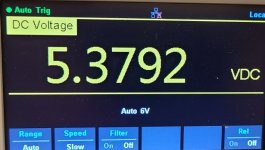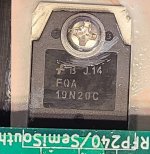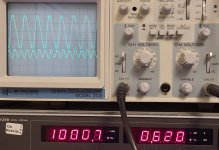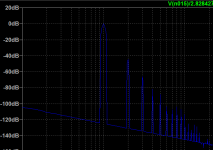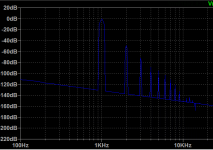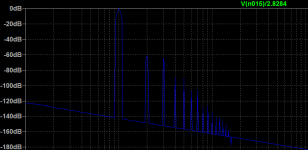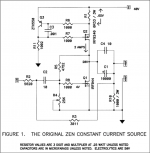Not having good luck with the C3M0065090D though, can't get it working and I had highest hopes for this one too. Will keep trying ... I can get gate voltage (measured from inside of C1 (C1/R2/R3 junction on F2 schematic - R2 missing from F2J schematic so junction of C1 and R3 - inside of C1) range between 5.9V all the way up to nice toasty 19.2V and it still won't turn on. I have also tried with R6 at 8.2K, 20K and 47.5K.
Does this mean I need to adjust R4/R5 to get even lower Iq?
Does this mean I need to adjust R4/R5 to get even lower Iq?
Found the problem - desoldering so many fets caused a solder joint on R6 to dry up. It was not soldered on bottom of board when I installed header pins for changing resistors and I may have damaged top pad for mosfet with all the parts changes.
Stay tuned for more reports
Stay tuned for more reports

Found the problem - desoldering so many fets caused a solder joint on R6 to dry up.
I thought it's impossible to have such high distortions so it could be a cold solder joint
I must admit that I did a mistake. On the simulation, I measured the THD and the gain not for the pure resistive 8 Ohms but for my Karlsonator speakers with an inductive characteristic which is also below 8 Ohms, so the proper results should be:
F2 with MOSFET Toshiba 2SK1530 1W (8 Ohm):
gain: 6 (15.56dB)
2nd: -46dBFS
3rd: -68dBFS
4th: -81dBFS
2SK1530 spice model:
Code:
.model 2SK1530 VDMOS (Rg==20 Vto=1.65 Kp=11 Lambda=2m
+ Rs=80m ksubthres=0.1 Mtriode=0.35 Rd=0.1 Rb=0.02
+ Bex=-2 Vtotc=-1.6m Trs1=0m Trd1=3m
+ Cgdmax=1500p Cgdmin=15p a=0.33 Cgs=880p Cjo=1260p
+ m=0.68 VJ=2.5 IS=4.0E-06 N=2.4 Vds=200 Ron=0.2 mfg=IH1906)gain: 7.11 (17.04dB) (16.1dB measured on my "real" F2J THD at 1W were about 0.334%)
2nd: -48.8dBFS
3rd: -71.6dBFS
4th: -88.5dBFS
SJEP120R100 spice model:
Code:
.model SJEP120R100 njf
+ Vto=0.9 Beta=16 B=1
+ Lambda=200u Vk=2k5 Alpha=20u
+ Is=1f N=3.4
+ Isr=1n Nr=6.8
+ Cgd=1n Cgs=610p Pb=2.6 M=0.92
+ Kf=100f Af=1
+ VtoTC=-2m2 BetaTCe=-1.15 Xti=86Attachments
Last edited:
THD from the LTSpice simulation, at 1W, 8 Ohms (4V amplitude), The pot was set to get symmetrical clipping, the Id is quite high: 2.73A:
SemiSouth SJEP120R100 THD: 0.370182% - on my F2J clone I measured very similar result, slightly lower THD
Toshiba 2SK1530 THD: 0.500333% - quite cool
Vishay IRFP240 THD: 0.106481% ???????????
SemiSouth SJEP120R100 THD: 0.370182% - on my F2J clone I measured very similar result, slightly lower THD
Toshiba 2SK1530 THD: 0.500333% - quite cool
Vishay IRFP240 THD: 0.106481% ???????????
Yes, the IRFP240 distortion in post #612 is not accurate but is only useful for comparison against the Cree in that same post. I didn't have it running at 1W (8Vp-p), it was closer to 16Vp-p and that's why the distortion is so much higher than the expected 1%. In later testing I did check it at 1W and do get the expected 1%THD. I ran a couple of FFT through ARYA but think my computer and surrounding AC is quite noisy as I have a thousand things connected here at my desk.
A smart fellow (Dennis) suggested I try running ARYA from a laptop running on battery and I will do final measurements in a less noisy environment or look to build power isolation.
Your simulated SJEP100R120 THD is the same as I got in testing last night with SJEP120R125 (0.37% THD @1W into 8ohms)
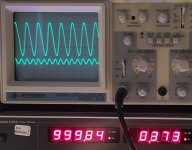
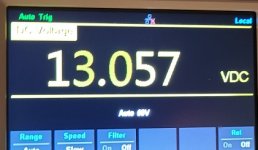
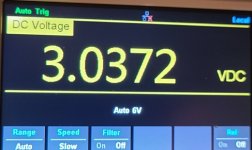
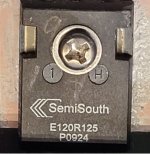
A smart fellow (Dennis) suggested I try running ARYA from a laptop running on battery and I will do final measurements in a less noisy environment or look to build power isolation.
Your simulated SJEP100R120 THD is the same as I got in testing last night with SJEP120R125 (0.37% THD @1W into 8ohms)




Last edited:
last Cree test
The C3M0065090D did not disappoint. Lowest THD as expected
The Candidate:
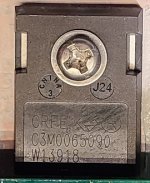
Gate Voltage - 6.2V
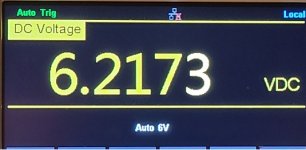
Drain Voltage - 13.366V (adjusted for lowest THD, not symmetrical clipping)
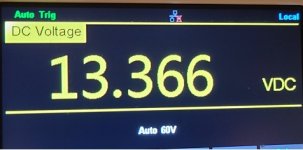
THD @ 1W into 8ohms - 0.0986%
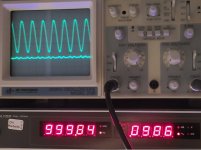
I am worried about the profile of the distortion for all the Cree devices as they show less H2 and more H3. FFT testing will be helpful here (next) as well as proper listening tests.
The C3M0065090D did not disappoint. Lowest THD as expected
The Candidate:

Gate Voltage - 6.2V

Drain Voltage - 13.366V (adjusted for lowest THD, not symmetrical clipping)

THD @ 1W into 8ohms - 0.0986%

I am worried about the profile of the distortion for all the Cree devices as they show less H2 and more H3. FFT testing will be helpful here (next) as well as proper listening tests.
Your simulated SJEP100R120 THD is the same as I got in testing last night with SJEP120R125 (0.37% THD @1W into 8ohms)
For me the measured THD was:
left channel: 0.3368%
right channel: 0.34432%
both at 1W and 8Ohm with SJEP120R100.
In the simulation IRFP240 suprisingly provides the lowest THD, but the harmonics propagation is not "triode like". The 2nd and the 3rd h are almost equal for this MOSFET.
It turns out that the current sources, whether ccs, srpp variants,
or Alephs, are not the source of much distortion at all. You could
say that they are already pretty stiff compared to the rest of the
circuit.
Your performance improvements must come from the gain device itself.




I found something that looks familiar. Haven't seen sthat before 
https://www.firstwatt.com/pdf/art_zv2.pdf
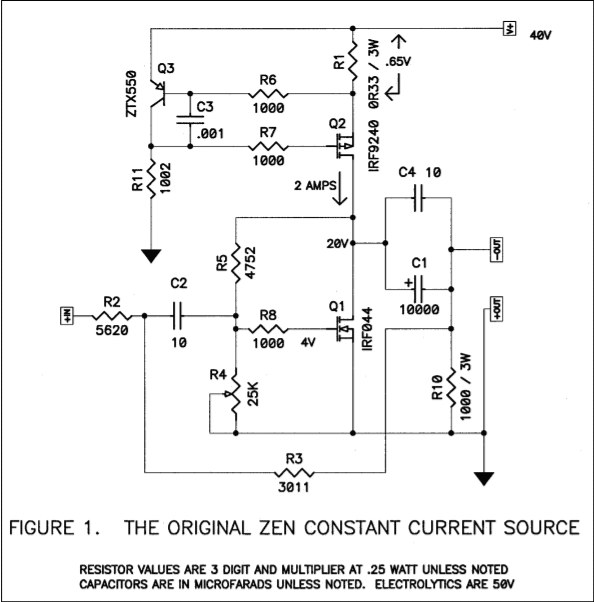
https://www.firstwatt.com/pdf/art_zv2.pdf
Attachments
Last edited:
13 years since the first one
Much has changed in the last 13 years but the long wait has definitely been worth it. Even though there was much experimentation in devices (which is still going on) an F2J with Semisouth is a definite must-build for me so I hope you can enjoy the visual as I enjoy the audio

It's built in a store 3U/400mm case and easily controls temperatures. It's stable below 48C and absolutely no noise/hum/hiss and drives my Frugalhorns (mk1) beautifully.
Thank you Papa!
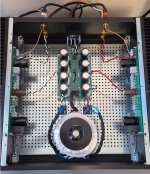
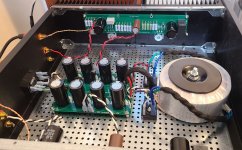
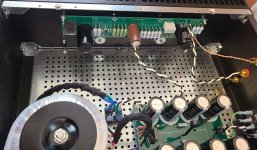
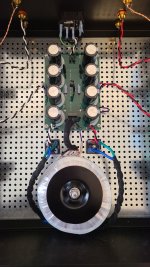
F2 that I built in 2008
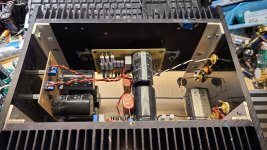
Much has changed in the last 13 years but the long wait has definitely been worth it. Even though there was much experimentation in devices (which is still going on) an F2J with Semisouth is a definite must-build for me so I hope you can enjoy the visual as I enjoy the audio
It's built in a store 3U/400mm case and easily controls temperatures. It's stable below 48C and absolutely no noise/hum/hiss and drives my Frugalhorns (mk1) beautifully.
Thank you Papa!





F2 that I built in 2008

- Home
- Amplifiers
- Pass Labs
- DIY F2 clone
